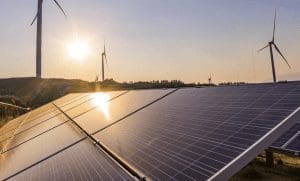Loss of a Phase or Open Phase Condition in a three-phase PV system with a Downstream Transformer
It is a common practice in PV systems to install a stepdown three-phase YG:yg transformer between the PV inverter (Distributed Energy Source, DER) and the utility (Point of Interconnection, POI). In light commercial and residential apartments, a three-phase 480/277 V to 208/120 V transformer is installed. This transformer must be protected in the open phase condition.
Photo credit: Pexels/Dids
Open phase condition or loss of a phase refers to one phase of three phases being physically and unintentionally disconnected on the supply side of the transformer. This could occur for several reasons such as a loose cable, a broken conductor, a blown fuse, a circuit breaker with one defective contact, etc.
Transformers used between the inverter (DER) and the utility (POI) are fed on both sides alternatively. Grid tied inverters are fitted with anti-islanding protection but when they experience loss of one phase in a three-phase system, they shut down as expected. However, in a three-phase system the situation becomes more complex if a transformer is present between the inverter (DER) and utility (POI). In this situation, the transformer construction makes a difference in an open phase condition.
Upon loss of a single phase in a three-phase transformer the downstream voltage could be re-generated by the transformer internal electric or magnetic actions (Voltage Reconstruction, VC) that makes the ani-islanding detection difficult. In a three-leg core YG:yg transformer the sum of the three phase fluxes, or the “zero-sequence flux”, must always be zero.
Read Also:
If there is a single phase open in a typical three-leg core transformer (phase C, for example), no exciting voltage is provided by primary side source. However, because the three leg fluxes must sum to zero, the flux of legs 1 and 2 should return via third leg. Therefore, near to full voltage will appear on the open phase under no load conditions in a YG:yg transformer with a three-leg core construction.
Photo credit: Brett Sayles/Pexels
Due to the high magnetic reluctance of zero sequence flux, the three-leg core type require much higher amount of zero sequence magnetizing current which lead to saturation and excessive heating. So, the challenge is not about the protective device but more important the method to detect the loss of a phase. At present, the best option seems to be zero- sequence current relaying, potentially backed up by negative sequence voltage relaying.
Main photo credit Tao Yuan @unsplash
Share this:






